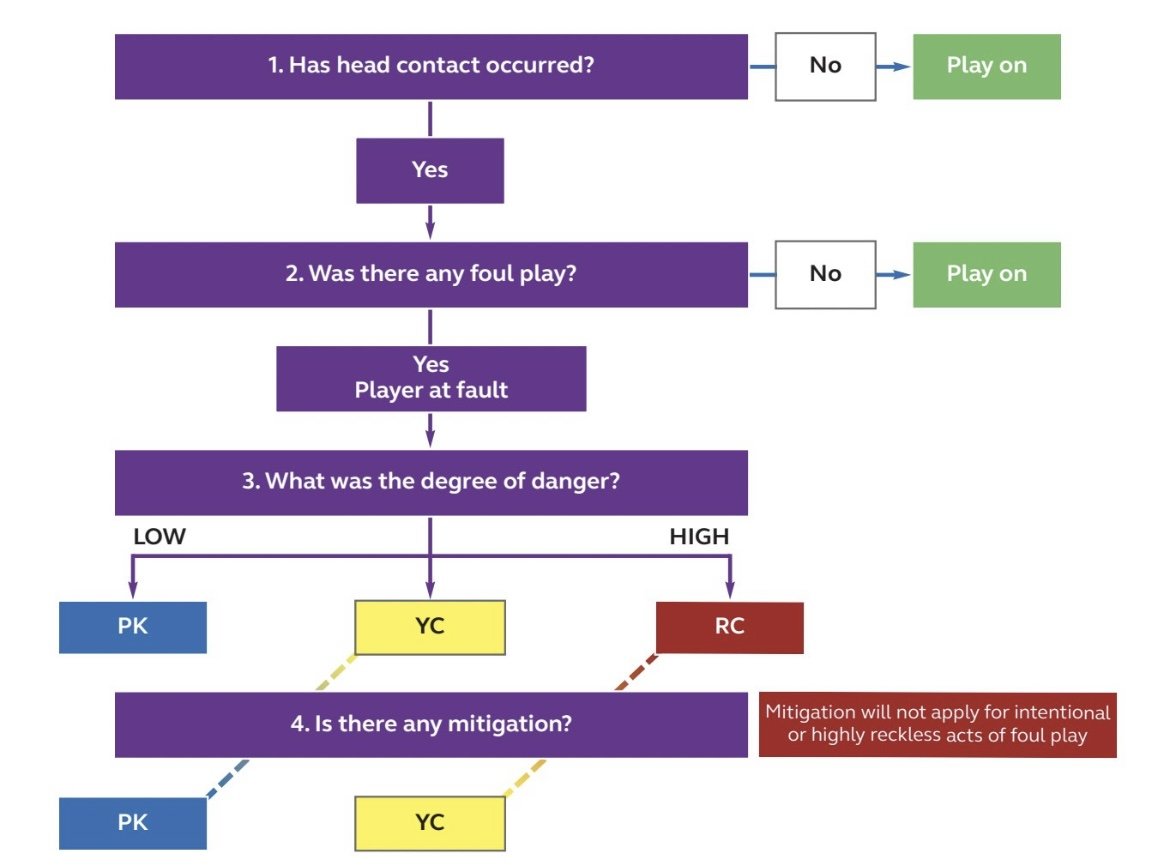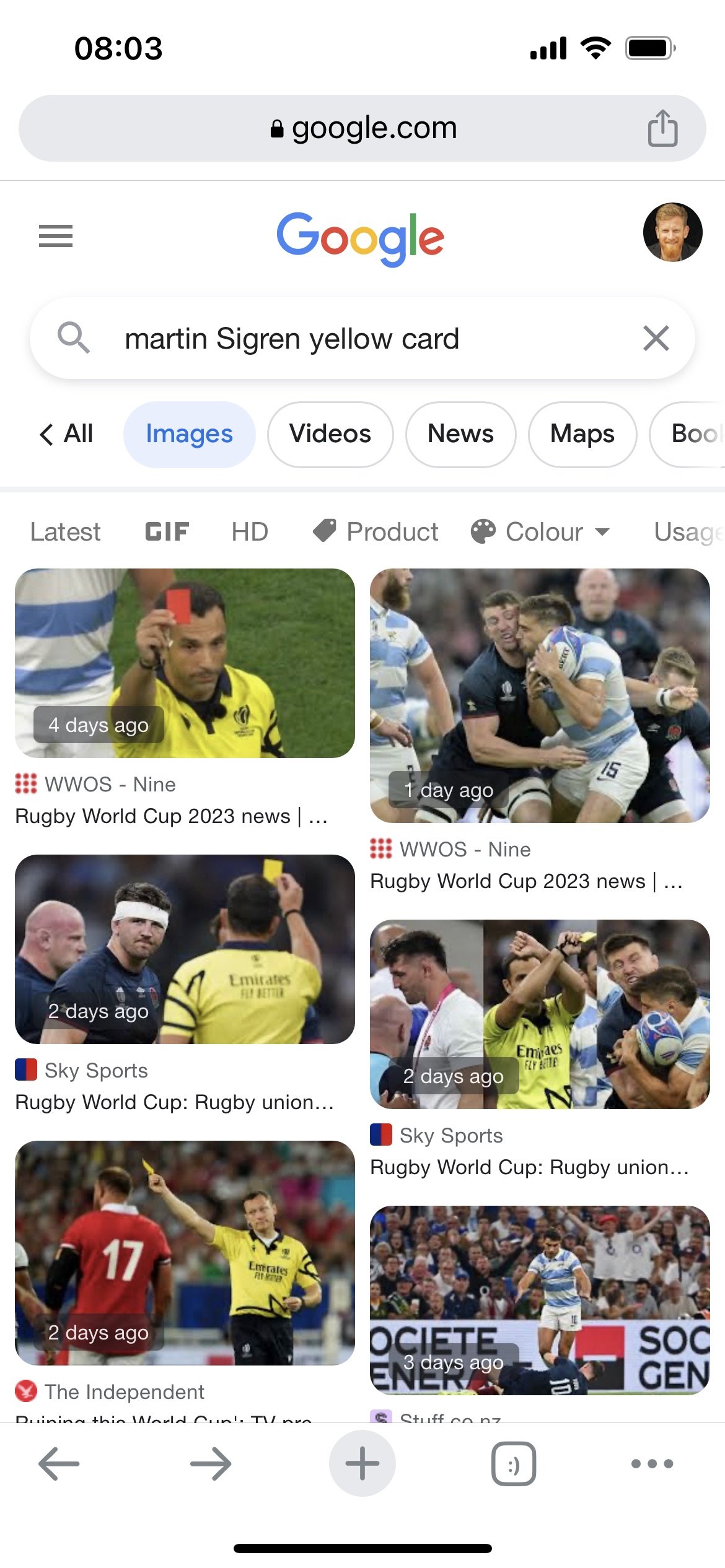what I learned from round 1 of the RWC 2023
Curry’s 2nd min red card incident.
We still need clarity on head contact issues!
Every four years when the Rugby World cup rolls around there will always be both a return of viewership and a large group of people watching the game for the first time. Due to my inbox blowing up and conversations I’ve had with these new fans I’ve discovered they’ve all had a major issue with one particular area of the game. This opening round saw at least three separate yet identical incidents which all produced a different outcome.
Tom Curry for England saw red when he collided heads with a falling Juan Cruz Mallia. Sigren for Chile experienced the exact same incident, this time clashing heads with a falling Matsushima against Japan however only received a yellow, and South Africa’s Kriel ran upright into Scotlands Dempsey in the first few minutes with a head collision that wasn’t even asked to be looked at by the on field ref.
Now I don’t care if all of these incidents are reds, yellows or “play ons” as I understand the pull on both sides of this argument where we have player safety on one side (more on that later) and game flow, speed and simplicity on the other. What also doesn’t help is when we have pundits on television who clearly haven’t seen the flowchart refs have to follow in these incidents and go ahead giving their, frankly, ignorant thoughts on the situation which basically is their “gut feeling” on what constitutes a card and not. The flow chart the refs currently employ isn’t faultless in this whole process. If your flow chart has subjective language then it will inevitably lead to subjectivity.
referees decision making framework.
The ruling has been for a while now that intent has no consideration at all in these decisions, but surely if the ref has to make a call on the second question “was there any foul play?” Then this already brings in a question of intent, the ref has to interpret if the player meant to do something or if it was an accident. Did he mean to gouge the players eye or did his finger happen to brush past the eye area? The third question “what was the degree of danger?” Is an even broader question to ask people. When a parent playfully throws their child in the air and catches them they see little to no danger but other people watching can interpret a different picture, this is also a question of “intent”. Finally we ask “is there mitigation?” well, how far can we go? Change of direction, drop in height and sudden change of speed? All of these actions ball carriers are encouraged and trained to do to make meters in attack so will be happening almost all the time.
I understand why World Rugby wanted to remove the word “intent” from their vocabulary, it sounds like they’re being more scientific with their language and less emotional but they’re just using it without acknowledgement now which muddies the waters of the decision making. Lets accept their human faults and allow the refs to look at two men, both trying to impose their will on each other through force and when there’s head contact, allow them to decide if one player throwing his head into another was a deliberate head-butt or an accident. All the players are briefed to no end about the dangers of concussion and these are literally the best people in the world at playing rugby, do we think that Curry, Kriel and Sigrin wanted to give themselves a brain injury, removing themselves from a world cup they’ve been training four years for and risking early onset dementia? I say we should bring back the term “Intent” to the referees vocabulary.
Back to player safety. We can sanction head on head hits as red cards regardless of intent but it will only serve as window dressing for the real problem with concussions and head injury which is the length of the season and sub-concussive hits. These large head on head knocks that make the head lines of course cause damage to the brains but are usually seen and assessed immediately during games. But how many do the players get at training and in warm ups? And how many sub-concussive hits do they recieve in a single game or training session? Because these go unnoticed they have a chance to build up over time leading to a higher risk of CTE (Chronic Traumatic encephalopathy) a brain injury only discoverable after death and common in people who have experienced repeated blows to the head.
The current season for a professional rugby player is so bloated that even with the minimal rest requirements there’s pressure on players to return before they’re fully recovered. The “contact” training is now limited but on viewing the training clips from teams like England its clear that sub-concussive blows can occur in non contact training as well, for example, their games of touch still include heavy impacts because they still need to get their bodies in front of ball carriers. Holding a tackle shield will create enough force to make the brain shake. If heading a soccer ball can cause damage, surely a player weighing north of a hundred and ten kilos repeatedly performing a down-up from six feet will create even more force on the brain? Now I don’t think we should stop these exercises in rugby training, but if we reduce the length of the season then the need to repeat them non-stop will in turn be reduced. Because we don’t have the technology to detect CTE but we know brain injuries need rest to recuperate then it would make sense to have a longer off season.
A game of “scrag” touch in the England camp.
You may argue this will kill the game financially but if we look at the NFL for inspiration - purely on the league structure - then you see their season is 17 games long and doesn’t include international responsibilities. Premiership, URC and Top 14 will average between them 20.6 games in their regular season, not including added on finals, local cups, the European Cup and international fixtures. The game is currently in terrible financial health and the players are the ones suffering the pay cuts. With less time dedicated to the field it will give the young players more opportunity to plan their route out of the game with vocational courses and study programmes. The reduction in games can in turn create more excitement within the fans due to the scarcity of fixtures to make it to the top and reducing “dead rubber” fixtures.
To bring it back to the Rugby World Cup, I’d like to see a statement from World Rugby explaining each incident, it's the least we deserve, along with clear coverage. I tried to get an image of the Chilean yellow yet it wasn’t shown in the highlights which is strange for such a decisive moment in the game. On googling for an image, this was what I was shown…
A Google search with a clear name given and all I get is five links to the ENG v ARG game and one to the WAL v FIJ game?!
I’ll be catching every game of round two because I still love this game and am interested to see what the outcome has been from the inevitable ref’s meeting post round one. It’s my dream to open my laptop next week and not be typing about refereeing decisions. One can hope.




